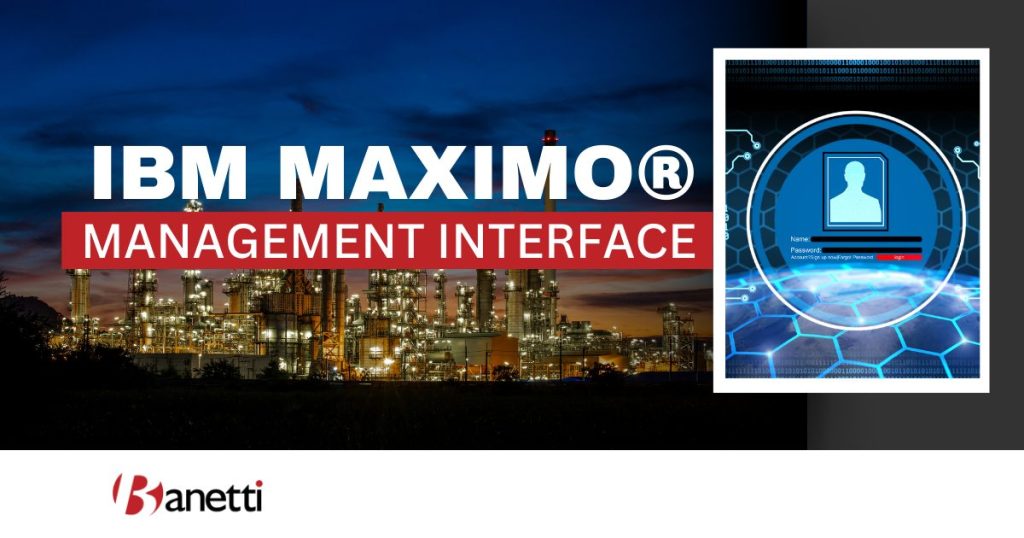5 Min Read
Table of contents

The IBM Maximo® Management Interface (MMI) is a cornerstone of the IBM Maximo® Application Suite (MAS), giving organizations the tools to monitor, manage, and integrate their enterprise asset environments with speed and precision. By providing MMI APIs that return real-time operational data, MMI helps system administrators track performance, troubleshoot issues, and connect Maximo with modern observability tools.
In industries where maintenance costs, uptime, and operational efficiency are critical, MMI plays a vital role. It offers insight into object structures, supports automation scripts, and provides visibility into service-level agreements, preventive maintenance, and more.
What is IBM Maximo® Management Interface (MMI)?

To understand the power of MMI, it’s important to see it as more than just an API layer. It’s a management interface that consolidates operational insight from every member server in your Maximo deployment. Built on a REST API framework, MMI delivers structured, JSON-based data.
MMI connects seamlessly with IBM Maximo® Manage and other MAS applications, making it essential for large-scale, multi-server environments.
Whether you’re tracking system default locale issues, monitoring server health, or integrating mobile applications, MMI provides a standardized way to access, manage, and analyze data across your system.
Key Features of IBM Maximo®️ Management Interface

The IBM Maximo® Management Interface is packed with capabilities that make it a central hub for monitoring and diagnostics. More than a tool for viewing metrics, it’s a bridge between operational data and decision-making.
REST API Capabilities
The MMI API framework offers a uniform way to pull diagnostic data without changing the system state. Every endpoint follows a consistent structure, starting from the root URL and extending into member ID–ID-specific resources.
The JSON-based responses make it simple to integrate with other system monitoring tools or to use in custom scripted applets.
Monitoring and Metrics
Through the monitor environment information function, MMI delivers detailed performance metrics. Administrators can view work order tracking trends, check inventory items and spare parts availability, and monitor system load.
This ongoing visibility supports better preventive maintenance planning and ensures compliance with service-level agreements.
Security and Access Control
MMI uses IBM Maximo®’s role-based access controls to protect all the APIs. By assigning signature options within the logging application, organizations can ensure that sensitive data is only accessible to authorized users.
Integration with External Tools
Integration is one of MMI’s strongest points. It works with tools like Prometheus and Grafana to visualize performance data and trigger automated alerts. The ability to integrate the MMI framework with third-party observability platforms reduces manual monitoring and ensures quicker development and upgrade decisions.
IBM Maximo® Management Interface APIs

MMI offers a variety of APIs that address different operational needs.
- The /jvm endpoint provides detailed runtime information, while /opsystem returns OS type and architecture.
- The /mbocount API helps identify memory bottlenecks.
- The /oscache checks the health of object structures to prevent corruption.
- Specialized APIs like /threads help detect deadlocks, and /loggers offer insights into automation scripts execution.
Each API can be tailored to specific monitoring goals, making MMI a flexible solution for any system environment.
How to Use IBM Maximo® Management Interface

Getting started with MMI is straightforward for administrators who understand their system architecture. Before starting, the system administrator must configure the mxe.oslc.webappurl to point to the correct management interface server.
Accessing the MMI API
MMI endpoints can be accessed via browser, integration scripts, or API calls. The output is in JSON format, which can be made more readable with browser extensions.
For example, when checking locale-related issues, administrators can query specific endpoints to verify the server’s locale settings.
Sample Use Cases
MMI can be used to check JVM health, monitor database performance, or ensure that work centers are operating efficiently. An administrator might use MMI to dynamically add monitoring for a mobile application integration, enabling real-time service status checks during field operations.
Banetti’s consulting expertise can help organizations design such integrations to maximize operational efficiency.
IBM Maximo® Management Interface in MAS 9.0

The release of MAS 9.0 brought improved scalability, faster MMI dialog performance, and an enhanced user interface. The MMI app is more responsive, and its set capabilities allow administrators to bundle related APIs for speedier access.
For organizations using mobile applications and self-service portals, MAS 9.0 ensures better performance when retrieving environment information and functionality data.
Benefits of Using IBM Maximo® Management Interface

MMI delivers multiple benefits that go beyond basic monitoring. Each benefit contributes to reduced downtime, better resource allocation, and improved safety.
- Streamlined Monitoring and Diagnostics: Administrators can quickly pull data from across the system without logging into multiple servers. This speeds up troubleshooting and decision-making.
- Faster Issue Detection and Resolution: With access to real-time metrics, problems like locale-related issues or slow work order processing can be identified and fixed before they escalate, lowering maintenance costs.
- Easier Integration with DevOps and ITSM Tools: Hassle-free integration with DevOps and ITSM tools allows for automated alerts, ticket creation, and escalation, ensuring that operational problems are addressed as part of a seamless workflow.
- Reduced Operational Overhead: By consolidating monitoring, diagnostics, and API access into one management interface, MMI eliminates redundant tools and manual data gathering. This saves time, lowers administrative burden, and allows more resources to be focused on strategic maintenance.
- Scalability for Enterprise Environments: Whether managing a single member server or a global Maximo deployment, MMI scales with your needs, supporting upgrade and development initiatives without compromising performance.
Troubleshooting with MMI

Troubleshooting in MMI starts with identifying the root cause through targeted API calls. For example, if a logging app action reveals anomalies in the script figures, administrators can use the event topic API to track listener counts and investigate potential bottlenecks.
Common Errors and Fixes
One common challenge is authentication failure. This typically occurs when system properties, application settings, or signature options are misconfigured. Verifying user roles and permissions usually resolves the issue quickly.
Another frequent issue is API unavailability, which may be caused by inactive member servers or network disruptions. Checking server health, confirming the root URL, and ensuring load balancers are routing correctly can restore connectivity.
Locale-related issues can also surface, especially when working with multilingual teams. Using tools like util import locale br ensures the system default locale aligns with application requirements, avoiding misinterpretations of data formats.
IBM Maximo® Support and Documentation
IBM Maximo® provides extensive resources to help administrators work effectively with MMI. The IBM Maximo® Support Assistant serves as a central hub for searching fixes, gathering diagnostics, and managing problem submissions.
Detailed guides, community forums, and the IBM Maximo® Management Interface offer step-by-step instructions for running mmi api queries, interpreting outputs, and applying recommended fixes.
IBM Maximo® Technical Support can also provide tailored guidance, especially when integrating MMI into broader self-service or mobile applications workflows.
Self-Service and Mobile Integration
MMI empowers users to access data directly from mobile applications like IBM Maximo® Mobile Application. Field workers can monitor work orders, check inventory items, and request service without returning to a workstation.
This self-service capability not only increases operational speed but also reduces the dependency on central IT teams. Combined with Banetti’s consulting expertise, mobile-enabled MMI can significantly improve asset performance tracking and preventive maintenance execution in real-world environments.
Conclusion
More than a set of APIs, the IBM Maximo® Management Interface is a full management interface that connects IBM Maximo® Manage, external monitoring tools, and automation capabilities. From monitoring environment information to tracking preventive maintenance, MMI helps organizations reduce downtime, optimize maintenance, and enhance safety.
Working with a trusted partner like Banetti, an EAM consulting platform that specializes in implementing IBM Maximo®, ensures you get the most out of MMI.
Banetti helps organizations create, integrate, and manage IBM Maximo® environments so they can fully leverage all the APIs and maximize returns on their EAM investments.


